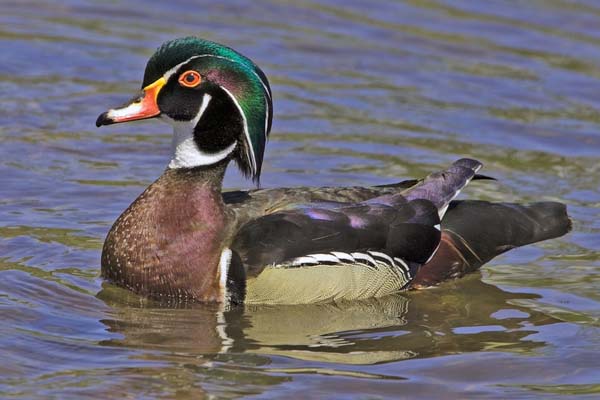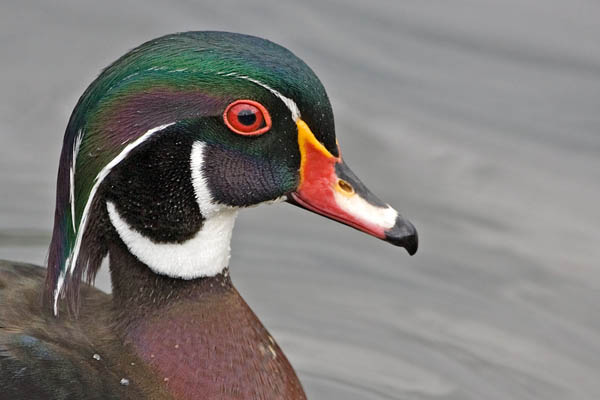Wildlife North America . com North American Animals - mamals, birds, reptiles, insects |
Wood Duck (Aix sponsa)
Wood Duck (Male), Burnaby Lake Regional Park (Piper Spit), Burnaby, British Columbia Photograph by Alan And Elaine Wilson. Some rights reserved. (view image details) 
Wood Duck (Female), Burnaby Lake Regional Park (Piper Spit), Burnaby, British Columbia Photograph by Alan And Elaine Wilson. Some rights reserved. (view image details) 
Wood Duck (Male), Burnaby Lake Regional Park (Piper Spit), Burnaby, British Columbia Photograph by Alan And Elaine Wilson. Some rights reserved. (view image details)
WOOD DUCK FACTS
DescriptionIn the breeding season, the male Wood Duck has iridescent green and purple head with long drooping green crest. There is a thin white line from the bill, over the eye, to the back of the crest. The throat and chin is white with a u-shaped white marking on the face and neck. The bill is red with yellow base. The chest is rusty red with a vertical white stripe between the chest and wing. The sides are yellowish and the back is black. The underside is white. In non-breeding plumage, the male Wood Duck has a gray head and body, and no long crest. The throat is white with same u-shaped white markings on face and neck. Females are olive or gray with bushy crest on head. The head and cheeks are gray with a bronze and purple sheen. There is a white area around eye. The chin and throat white. The breast is gray brown with tan streaks; the belly and underside of the tail are white. Juveniles have brownish gray upper parts, white circle around eye, and white throat, and are similar to adult females. Size length 47cm - 54cm. Wingspan 66cm - 73cm Environment forested wetlands, along rivers, swamps, marshes, ponds, and lakes Food seeds, acorns, fruit, aquatic and terrestrial invertebrates. Breeding Nests in tree hollows. Nest is lined with down. Lays 6-15 creamy white to tan eggs (sometimes more). Range Breeds in southern Canada, eastern half of the United States, and the West Indies. Also breeds along the Pacific coast from British Columbia to southern California. Classification
Home | Mammals | Reptiles | Birds | Insects | Privacy Policy | Disclaimer | Contact Us |